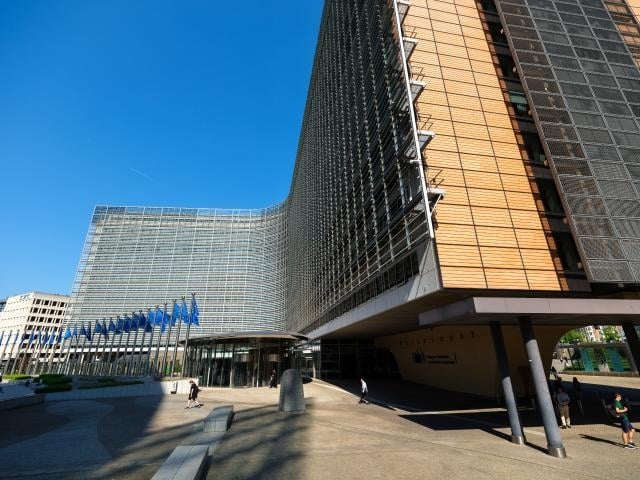Tobacco taxation and smoke-free products: What is the future regulatory path for the EU Commission?
Following a two-year postponement of a draft for the new Tobacco Excise Directive (TED), the EU’s new batch of commissioners can finally be expected to tackle the thorny issue of tobacco regulation. Faced with a pressing need to reduce cancer and pav

Following a two-year postponement of a draft for the new Tobacco Excise Directive (TED), the EU’s new batch of commissioners can finally be expected to tackle the thorny issue of tobacco regulation.
Faced with a pressing need to reduce cancer and pave the way for a smoke-free generation, member states, NGOs and the tobacco industry are impatient for the long-awaited draft to finally be set in the agenda.
Aimed at harmonising rules across the sector to urgently reduce smoking prevalence, the unexplained delay of the draft has major implications across the bloc. Rules and regulations over tax, customs and alternative products vary widely. Some countries impose a higher level of taxation like France, which results in a rampant trade in illicit cigarettes. Cultural differences also play a role, with Sweden a major proponent of oral tobacco products. Major fluctuations also exist in regulations on new products such as heated tobacco, e-cigarettes and non-tobacco nicotine pouches.
The current directive – which imposes minimum excise levels on the 27 member states and defines tobacco product categories – dates from 2011. The new draft and its impact assessment were due to be presented for debate by the European Council and Parliament at the end of 2022.
During the confirmation hearing on 6 November of commissioner-designate Olivér Várhelyi, the Hungarian candidate for the health and animal welfare portfolio said he intended to evaluate and revise EU rules on tobacco and nicotine products. He underlined the concern about young people’s excess consumption amid the need to prioritise preventive health measures.
Várhelyi referred to the continued importance of Europe’s Beating Cancer Plan, a key preventative health roadmap that originally incorporated reviews of tobacco policies among its various actions.
What is in the draft 2022 TED?
The new draft TED proposed a large increase in the EU minimum excise rates for traditional tobacco products that reflected differences in purchasing power, revealed TobaccoIntelligence.
The tobacco market and analysis source said the impact assessment report introduced a higher excise tax level for heated tobacco products. Currently not covered by present laws, this would place them on a similar price point to regular cigarettes. The draft directive also proposed a range of minimum rates for alternative products, dependent on health considerations.
As far as e-cigarettes were concerned, the Commission opted for a “moderate level” minimum taxation, while applying higher rates to products containing higher levels of nicotine concentration.
It recognised that the relative health risks of e-cigarettes were still subject to debate, but stated that vaping contributed to smoking initiation, among young people in particular. Excluding nicotine-free liquids from taxation would therefore “hamper the pursuit of the public health goals in member states,” it said. Other manufactured tobacco and nicotine products would fall under a “catch-all” regime aimed at covering their diversity as well as future developments in the industry.

Belgium’s tobacco plan aims for smoke-free generation
Belgium has long adopted a cautious approach to novel products out of concern over their long-term health risks and potential incentive for youngsters to start smoking. Meanwhile, it maintains conventional tobacco control policies such as taxation and pricing.
But the country still has too many hardened smokers. An estimated 15% of the population were daily smokers in 2018. That’s why a tobacco plan was introduced in 2022 that sets the ambitious target for 0% of youth and 5% of adults to be tobacco users by 2040 – according to the EU’s goals on smoking.
A series of smaller goals need to be hit before this deadline, including the ban on nicotine use in most public places by 2025, the outlawing of smoking in the catering sector and further restriction on tobacco sales.
Despite Belgium’s superior health council’s recognition that alternative non-combustion products represent a lower health risk and can help smokers quit, the country lumps together cigarette smokers and users of other nicotine products.
While the government has said it would “look into” reimbursement for nicotine replacement therapies to help users quit, this action is not yet in the plan. NGOs like Foundation Against Cancer have criticised it for its lack of ambition, calling for financial aid for monitoring and awareness campaigns and more access to smoking cessation counselling.
In a further restriction on access to alternative products, Belgium, like the Netherlands, banned nicotine pouches in 2023. France is now also planning a similar outlawing of the oral product.

Nicotine pouches and the Swedish model
Although available worldwide, oral nicotine pouches are often less familiar in countries outside of Scandinavia and the US. It’s one reason why the EU Commission has difficulty knowing how to regulate them.
The small, permeable pouches containing varying amounts of nicotine, either derived from tobacco plants or synthetically produced, are placed between the upper lip and gum for some 30 to 40 minutes.
Belgium’s decision to ban their sale was justified by the need to protect the health of children and young people, according to then federal health minister Frank Vandenbroucke. The fear was that pouches would be a stepping stone for youngsters to start smoking at an earlier age.
Another motivation to clamp down on the product – that underpins many countries’ opposition – is to discourage users switching to snus. This is the traditional moist tobacco product that’s an intrinsic part of Swedish culture. It’s packaged in teabag-like sachets that are placed under the top lip to deliver a nicotine rush.
But in Sweden, oral tobacco has helped achieve the lowest rate of tobacco-related disease in Europe. With the lowest smoking prevalence in Europe (5.6%) in 2022 – the average is 23% – Sweden is actually on target to officially become the first country in Europe to reach the EU goal of eradicating cigarettes by 2040.
Non-tobacco nicotine pouches became regulated in Sweden in 2022 in recognition of the different health profile of these products compared with regular cigarettes.
Looking to the future
According to the new TED proposal, nicotine pouches would be slapped with an unprecedented level of taxation. Manufacturers and users argue that as they have been recognised as a potentially reduced risk product compared to smoking, they should be accorded a lover minimum tax rate.
The EU Commission’s proposal is expected to define different categories of products, excise structure and minimum rates for each of these products. While a harsher tax regime for alternative products is anticipated, the current uncertainty and lack of clarity over tobacco regulation is at the detriment of smokers in the EU, as well as individual member states, NGOs and the industry.
Photos: (main image) Berlaymont ©ec.europa.eu; ©Belga image; nicotine pouches and snus

































